Time & Attendance guide
This guide is going to help you choose the right solution for time and attendance, with the final goal of raising the company's productivity, simplifying payroll processing, minimizing compliance risks and mobilizing the staff.
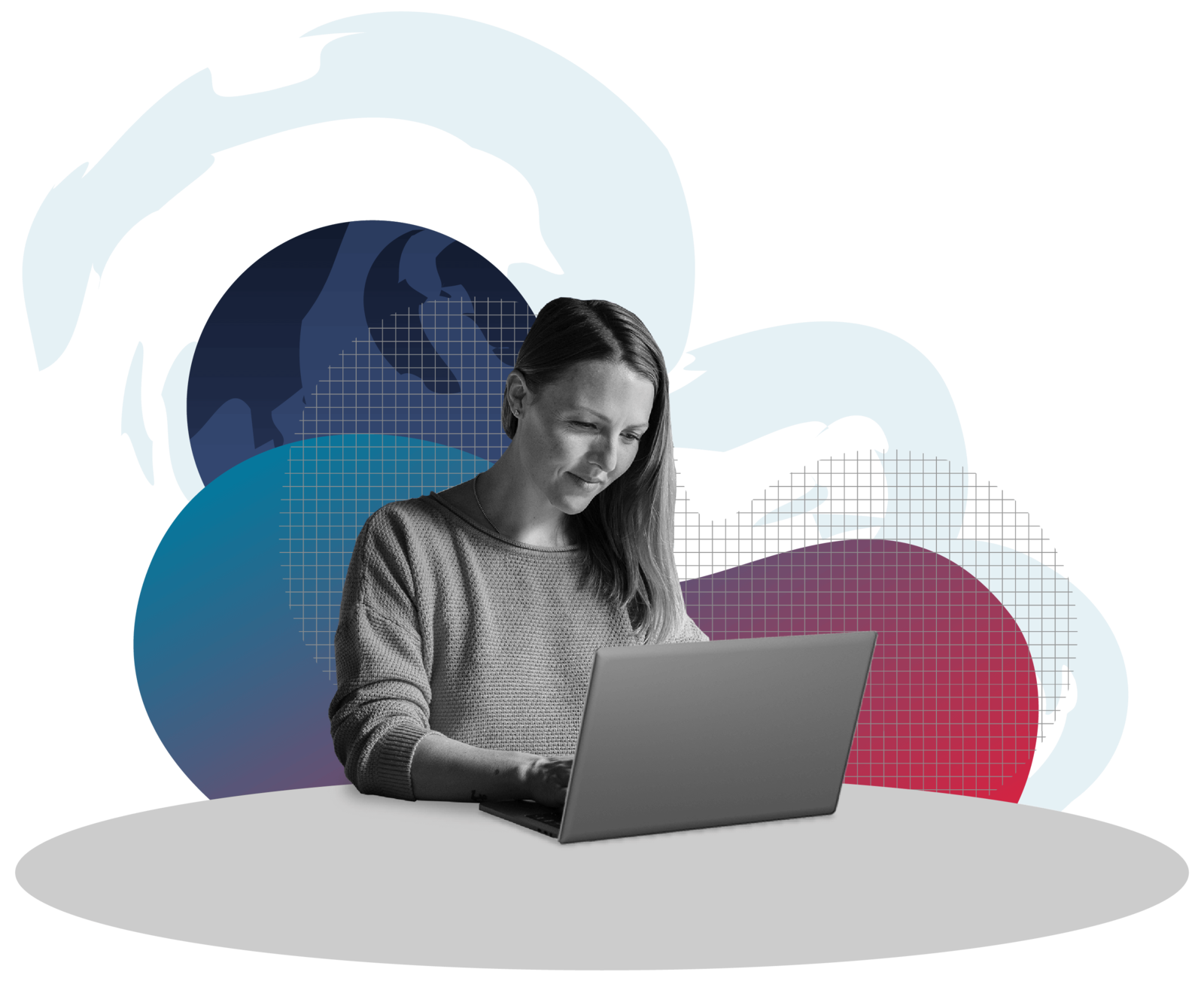
Time is humanity's key resource. If it is correctly engaged, the efficiency of individuals as well as teams can be greatly enhanced. In other words: we achieve more while spending less time, which is the key competitive advantage. One of the best ways to optimize time usage in organizations is to introduce and consistently employ a system for time and attendance.
On the one hand, companies that introduce time and attendance solutions increase their efficiency, and on the other, the transparent communication and higher-level organization has a positive effect on the internal culture as well. For this to happen, the introduced time and attendance solution does need to be user-friendly as well as adjustable for various scenarios in business while also supporting all the modern forms of work.
Seeing as this is an area still filled with doubts and myths, this rather long article offers you all the key information on time and attendance. Besides pointing out good practices in introducing such solutions, we will also demonstrate the newest technologies in the field and try to dispel a couple of myths about time and attendance.
Everyone wishing to try out our solution as soon as possible is advised to skip ahead to the START FREE TRIAL section and later, if needed, return to the SOLUTIONS section, where various challenges and methods are described to suit every kind of need, including yours.
If you have a challenge that solutions in this publication can't answer, you can always contact us at sales@allhours.com or book a call with our sales advisor . For everyone in the beginning stages of introducing time and attendance into your company and wishing to expand their horizon first, we have set forth a couple of TRENDS to clear up the basic facts and offer a soft introduction into the topic.
1. TRENDS – changes in the work environment that greatly influence optimal time and attendance solutions
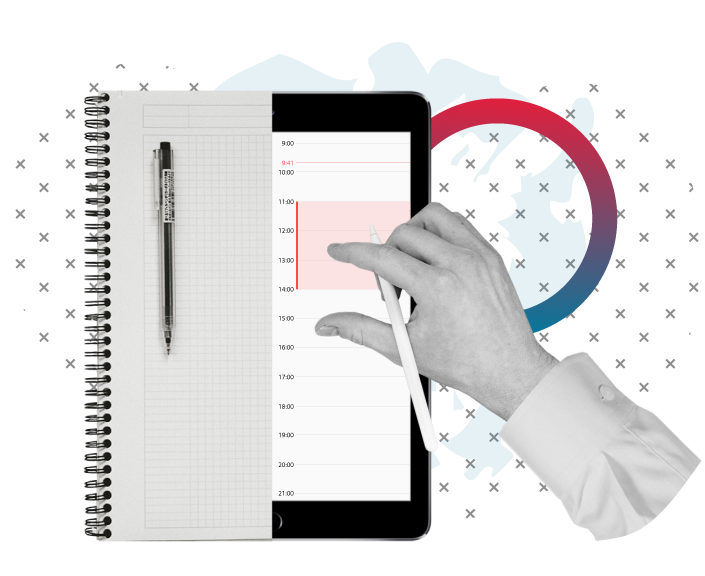
1.1 Digital transformation
Throughout history, paper forms for time and attendance, filled out manually with a pencil at company entrances, transformed into mechanical clocks with time cards which the employees stamped on arrival. In the last 30 years, entry points have been equipped with electronic tracking terminals which the employees have been using to track their worktime with the help of ID cards of various technologies.
The advent of smartphones and apps turned the situation on its head. Now, the (Bluetooth or NFC) card can be fixed to the wall, and the terminal is in our own smartphone. The physical presence of the phone on location is enough to log arrivals and departures. In the near future, time and attendance will probably only require the phone to be in our pocket where it will be recognized, with the system automatically logging our time of arrival and departure (without pressing any buttons on the phone).
Digital transformation has proven itself to be one of the most promising principles able to bring concrete progress in efficiency. Not only can administrative tasks be transposed into digital form – entire business models can be turned around entirely. Many costs thus become redundant and the required time reduced.
Tracking time and attendance in the cloud with the use of a phone also supports all the modern forms of work, e.g. flexible work, remote work, part-time work, fieldwork, contractual work etc. Time and attendance has undergone a radical digital transformation in the last ten years – like most other fields. What is more, introducing a cloud-based system of time and attendance can help a company boost their internal digital transformation as well.
Trend No. 1: Hardware and software are being introduced into every aspect of our lives, causing tectonic changes in companies' business processes, requiring due attention and swift, agile adaptation.
Read more:
Time & Attendance cloud solutions are the future
Are you still using paper time sheets. Here are the many reasons not to.
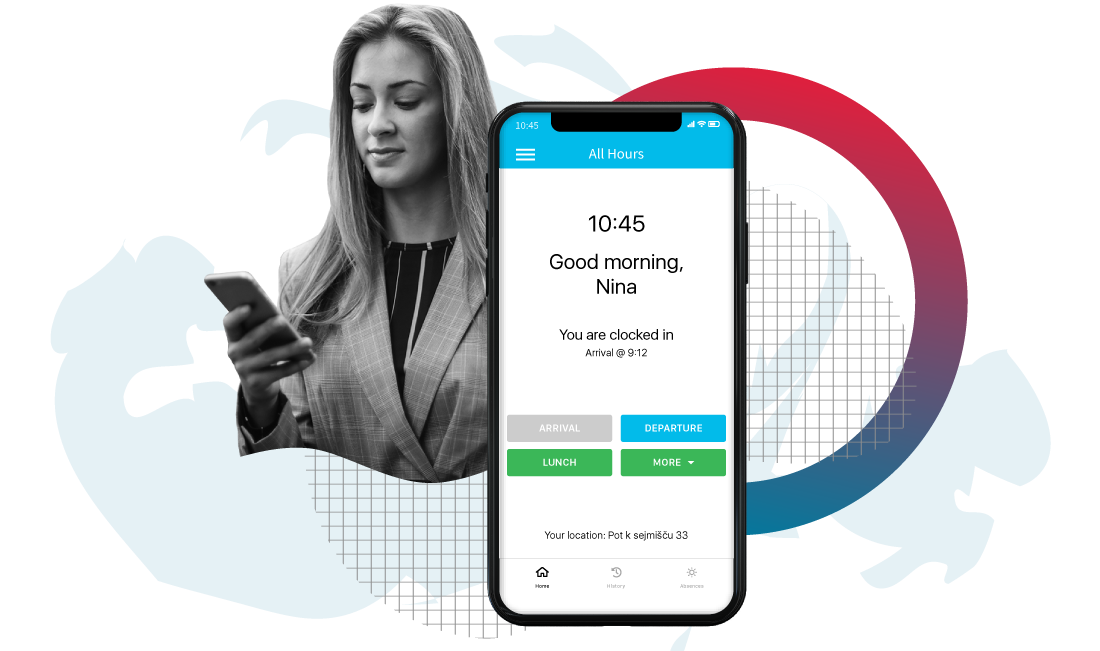
1.2 Time is golden
Recently, a leading bank in the region launched an ad campaign with the key message: »Turn time around to work for you!« What's interesting in this message is that this is the ad of an institution with the main business of turning our money around.
Evidently, time as a human resource is getting more appreciated by the day. The success of its engagement sets us apart from the crowd, especially if we are leading a team of colleagues, responsibly planning and scheduling their worktime. Every minute must thus be spent wisely.
Trend No. 2: The amount of projects and opportunities increases every day, as well as the amount of competition, with time running out. Carefully managing time as a source of competitive advantage is thus becoming more and more important.
Read more:
The ultimate time management guide
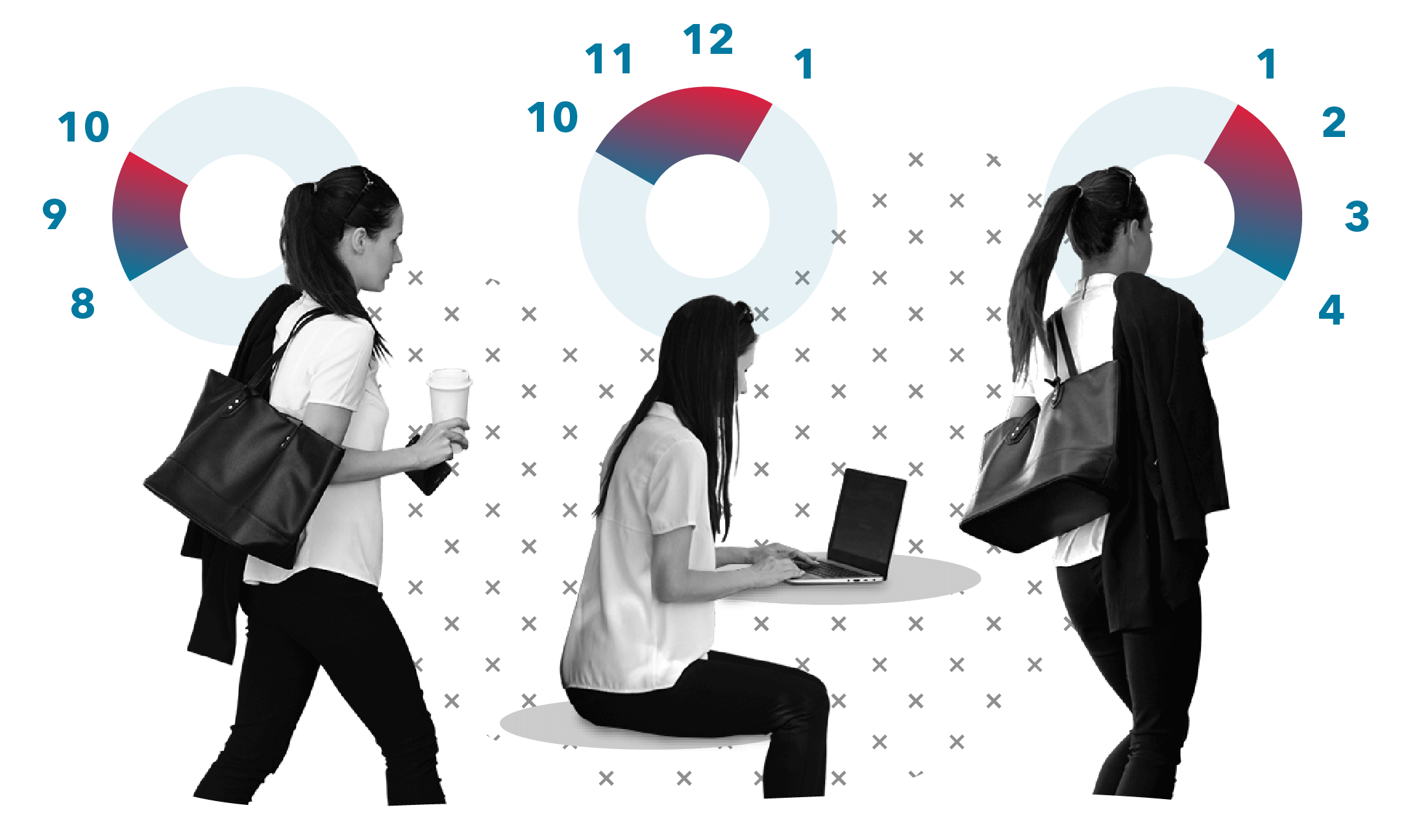
1.3 Flexi is sexy
The phrase »time and attendance« first makes you think of factory efficiency, achieving the norm, doing industrial worktime, working shifts and employing the ubiquitous »time card«.
But, surprisingly, data shows that even the most successful global companies, especially in the information services, carefully track various time categories and will allocate time to activities, projects and clients.
This data, once collected, can be extremely useful in the next cycle of planning and preparing offers for projects. No successful company is notorious for its lack of organization, muddled priorities and time wasting. Consistently tracking worktime can also contribute to making good business decisions.
Trend No. 3: Flexible forms of work (remote work, flexible worktime, project fieldwork etc.) makes the need for tracking and analysing aspects of worktime an even greater factor towards efficiency and making good business decisions.
Read more:
Flexible working arrangements are on the rise
Remote Work – Advantages and Disadvantages
Best remote work tips – How to make remot e working work for you
Working remotely from home – how to do it right
How to work from home, stay ultra-productive an d be super successful
Flexible work policy - How to successfully implement one at your work place
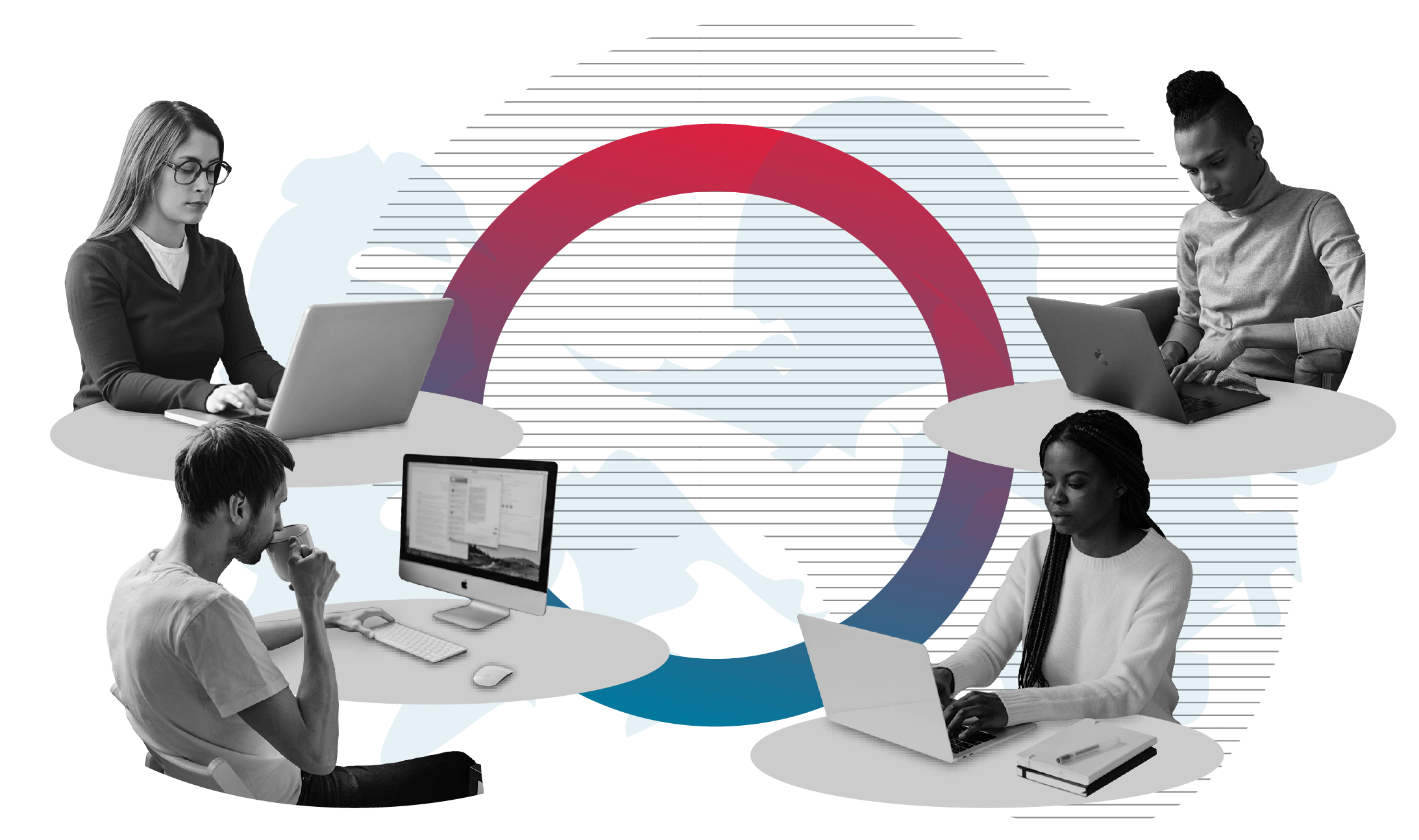
1.4 The world is Hollywood
Since the beginning, Hollywood has kept its project-oriented, organized structure, meaning that the best movies are created through the joint forces of the best and most creative individuals – the experts in their respective fields. After the completion of a movie, the project group is dissolved into atoms.
The same applies to the universe, if looked at with a proper timeframe. Black holes draw everything around them into themselves by means of a powerful centripetal force, then, at a certain point, explode. This »big bang« blows them apart with centripetal reversibility, meaning particles fly off in every direction. Increasingly, companies are now entering a stage where the ties that exist betwen employee and company are loosening every day.
Individuals wish for autonomy, and those specializing in their own niche areas can offer their skills to anyone in the world through the internet. The result is a multitude of freelancers with the need to self-manage their worktime. Our project-based time and attendance solution does a great job responding to this challenge.
Trend No. 4: Companies are employing more and more »freelancers«. But a successful collaboration and management also calls for suitable tools, which includes a platform for logging the time spent on projects.
Read more:
A simple & powerful project time tracking solution
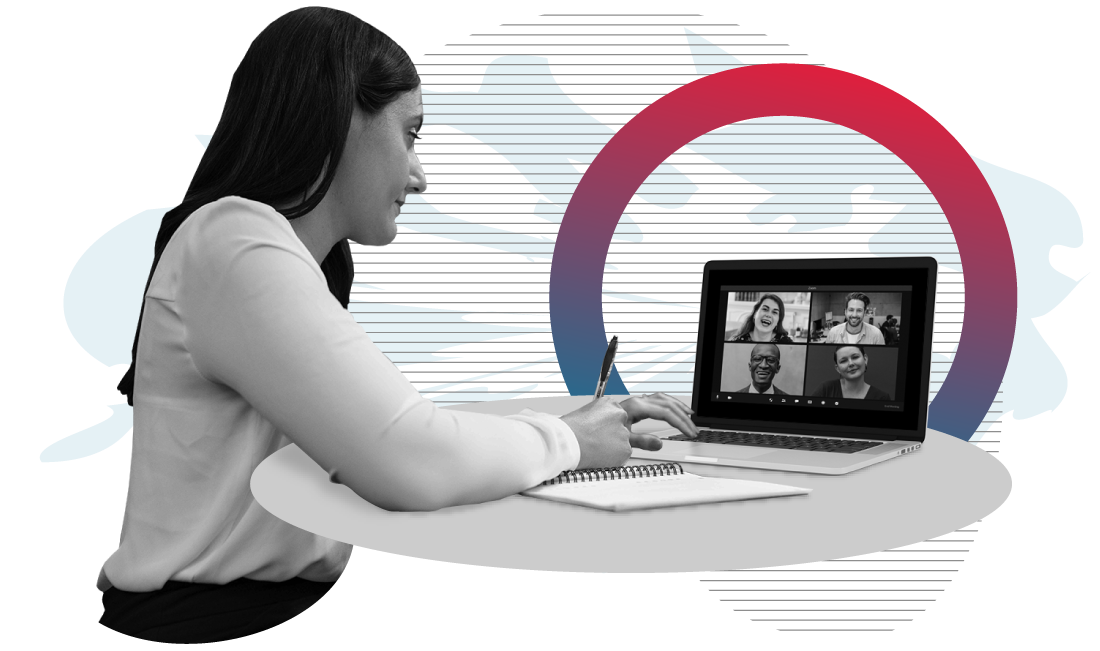
1.5 The new, contactless economy
The tsunami of the COVID-19 virus has turned many of established patterns on their head and opened up opportunities to new habits, the heralds of the new economy. One of the patterns at the surface of all these changes and the common characteristic of these areas is contactlessness. The trend of contactless operations can be discussed at two levels – in »close« contactlessneess, many functions can be now performed in our own phone (enabling a contactless choice of floors in an elevator, logging worktime on arrival, contactless door opening etc.)
The second level is »distant« contactlessness, when meetings and all other work activites can be now performed from home, or, for that matter, from anywhere with access to the internet. Many global organizations with basecamps spread all over the world have been using this approach since their very beginnings, with all others adopting this approach as self-evident and standard overnight.
Most work environments allow for work to be done from home, provided the nature of the business allows it – meaning physical contact is not essential to acquiring results.
Trend No. 5: Contactless technology fulfills the need for more security, happiness and health of employees, and is sustainability-oriented. Modern workplaces permit work to be done from home, and office spaces are built to minimize physical contact, which reduces the possibility of infections.
Read more:
The Low-Touch Economy – What it is and why it's important for your business
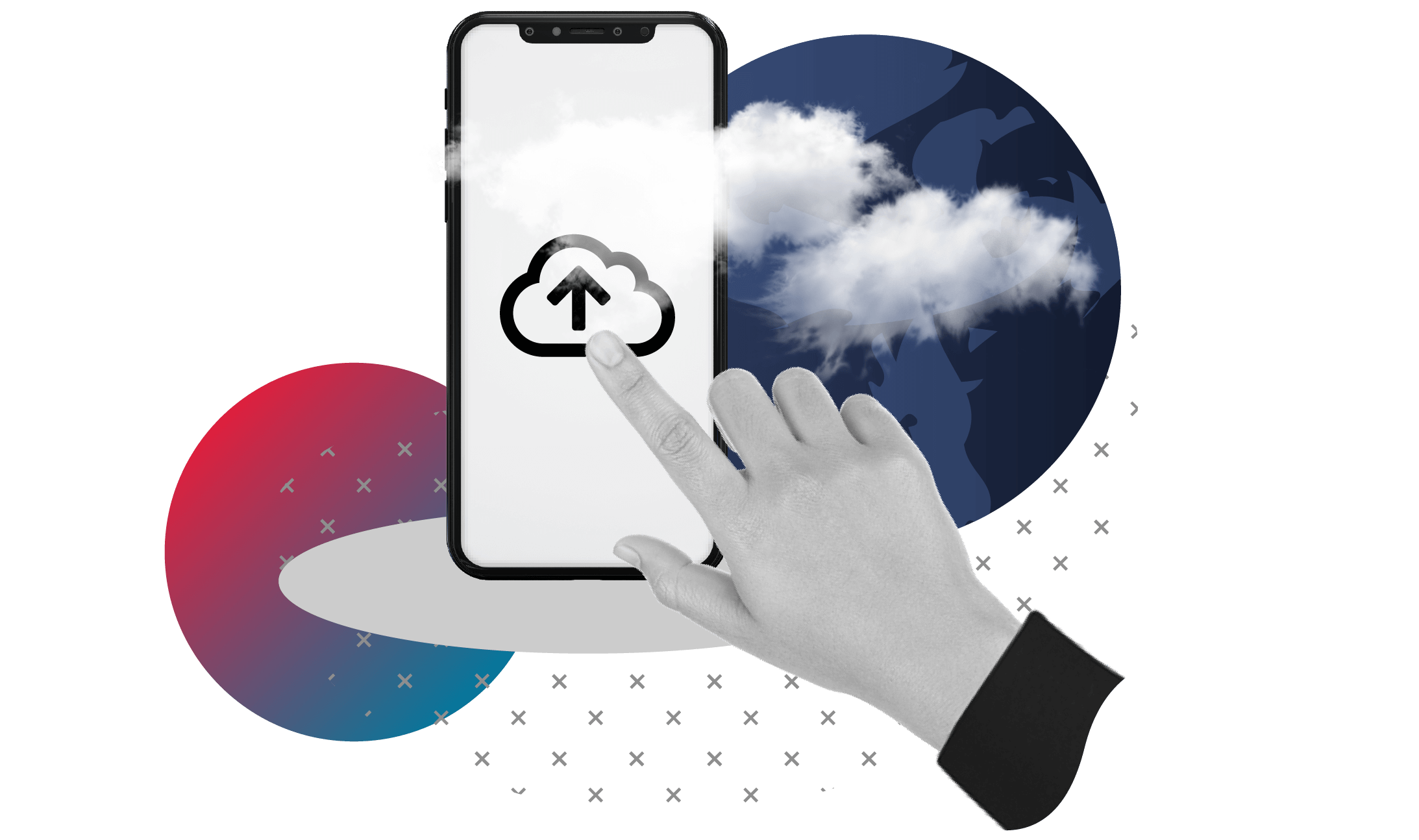
1.6 Time and attendance revolution
With all the tectonic changes happening all around us, the business and technological revolution can also be seen in the area of time and attendance. The process of logging worktime is undergoing a deep digital transition brought about by the internet, mobile telephony and new ID technologies. Paper and then plastic cards with wall terminals were the go-to equipment for decades, and now, time and attendance clients are moving to mobile phones on a large scale.
The mobility of users is also increasing, which goes for field salesmen and workers in warehouses as well as clerks behind sales counters and lorry drivers. In the future, we can expect the locations we enter to automatically recognize us and log our arrival and departure, bringing additional automatization to timeframe, location and activity logging.
Trend No. 6: ICT support of business functions is migrating to the cloud, which enables further automatization, integration and interpretation of business events, with the users being provided a significantly improved overview and user experience.
Read more:
The main benefits of cloud-based attendance systems
How to choose the best clocking system for a modern workplace
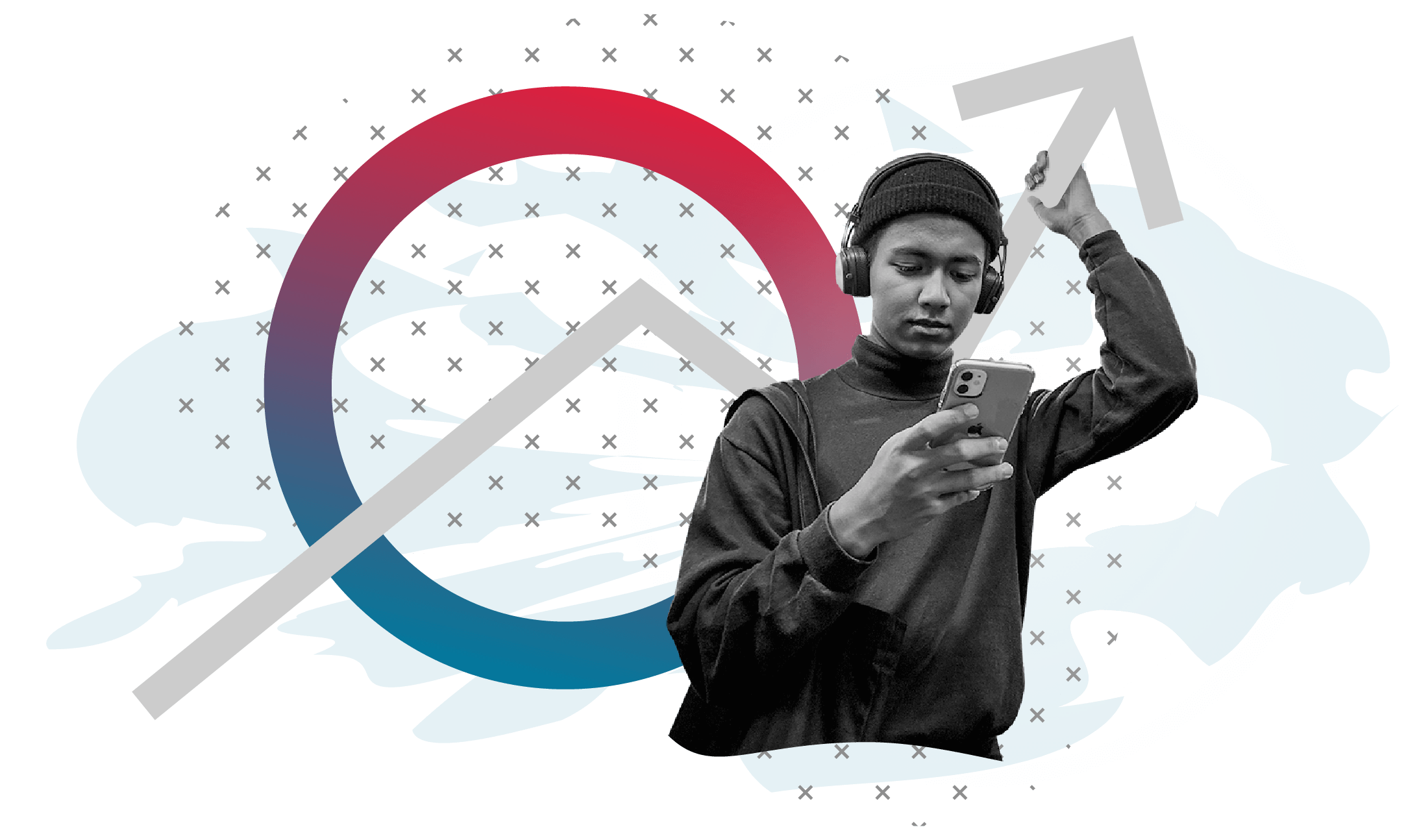
1.7 The Spanish paradox
Spanish workers at Deutsche Bank have filed a complaint to the European Court of Justice (case C-55/18 Federación de Servicios de Comisiones Obreras (CCOO) / Deutsche Bank). The court ruled that the absence of a daily, individual time and attendance system makes it impossible to objectively and reliably determine the number and schedule of working time or overtime.
In practice, the lack of such a system precludes workers from exercising their rights, and so, in order to ensure the full extent of the rights from the Directive of the organisation of working time, member states of the European community must task their companies with implementing an objective, reliable and accessible system that enables individual time and attendance.
Member states thus have the responsibility to set fort concrete rules regarding the introduction of time and attendance, especially the form of the tracking system, and if need be, also take into account the particulars of each sector, or special cases stemming from the sizes of companies. The Labour and Social Security Registers Act of Slovenia is right now in the stage of being adapted to meet the aforementioned requirements.
These changes are expected to effect more precise logging and worker protection, and will help inspectors monitor and check possible violations.
In recent decades, tracking time and attendance has frequently been perceived as a symbol of control over employees. Today, we could say that time and attendance works both for the management as well as for the workers. The new European legislature, therefore, calls for greater precision in tracking arrivals, departures and other events, not for the purposes of worker control, but to correctly assess worktime and improve the fairness of the reward system, and foremostly, to reduce errors.
A precise timesheet of working time makes it possible, for example, to properly observe worker's rights regarding maximum working hours, the right to daily and weekly rests and to fairly reward the individual categories of worktime, such as overtime and night shifts as well as weekend and holiday hours.
Trend No. 7: Timesheets have been around for more than 30 years. In the past, they have frequently been seen as symbols of control over workers. Today, also from the legislative standpoint, the timesheet empowers the worker, establishing a balanced position and bringing motivation for efficiency to reach better results in shorter timespans.
Read more:
The European working time directive – what you need to know
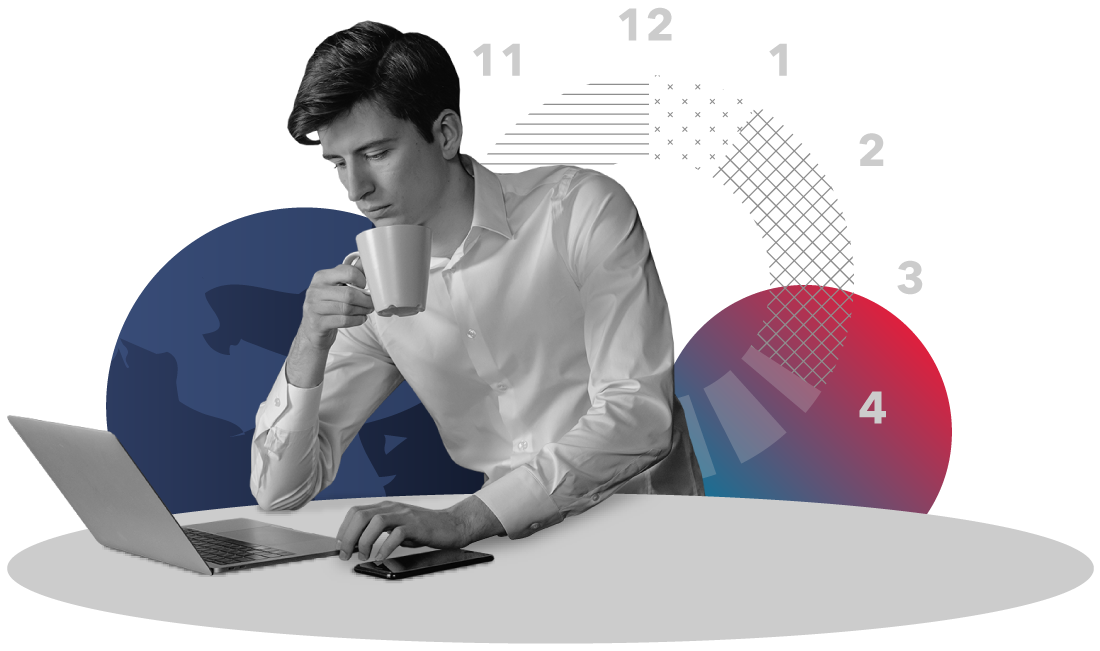
1.8 Self-managing working time
The final result of all the trends: tracking worktime was once entirely in the hands of the HR/administrative sector, but the advances in technology and organization have brought about the era of »self-management«. Trust and autonomy are the underpinning values of the best organizations, enhancing responsiveness and progress without overwhelming administration. Despite this, the world, of course, is not black and white and every free system needs certain regulatory frameworks.
These common rules have frequently found their way into collective contracts and internal time and attendance policies created by individual companies. This makes it possible to avoid being disorganized and intransparent – qualities which cannot benefit anyone either way. At the same time, this avoids risks potentially brought about by inspection visits as policies and time and attendance systems prove the regulatory compliance in this area.
All employees with access to the internet will receive a username and a link to set their password via e-mail, thus acquiring a new functionality, a sort of »personal dashboard« which they will regularly use to acquire transparent access to their own timesheets, scheduling, scheduled activities and planned or approved leaves. Employees without access to the internet can access this data at entry points on arrival or departure from work.
Therefore, the initial task of a time and attendance system manager is to supply the system with an employee list as well as the required rules and categories. Tracking can thus be carried out in accordance with predetermined rules. These initial settings and data can be put in and edited manually, with the use of batch entries or imported from existing systems. With small companies, these are most frequently in the shape of Excel tables.
Systematic work in larger organizations is made possible by setting up departments and hierarchies. This enables authorization schemes to be assigned to individual users. HR directors and leaders are typically supplied with a broader perspective over the company or certain departments, which also facilitates staff scheduling and approving leaves for the employees under their purview.
Trend No. 8: A person's main inner motivation is his/her autonomy, and so it is key to establish a trend of trust in the employees, turning them into effective managers of their own working time.
2. Time & Attendance solutions
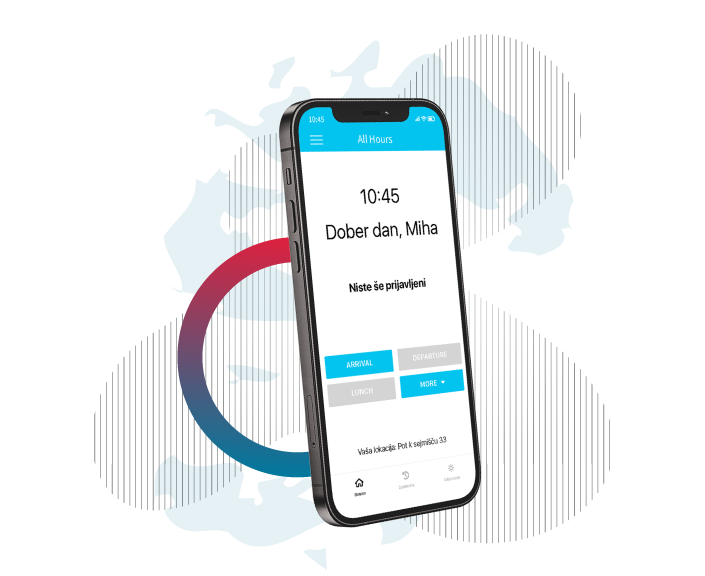
2.1 Key tasks – »Jobs To Be Done«
Every system meant to bring some value to an organization has a set of functions that perform certain tasks. In English, this is called »Jobs To Be Done«, which should be defined for every piece of sotfware, including time and attendance systems.
Before turning our attention to the key tasks, let us point out the slight difference between these two terms, commonly used as synonyms:
- Time and attendance means the logging of all work-based temporal events.
- Employee timesheet management means the management of all the logged events and the resulting worktime categories.
The jobs-to-be-done in time and attendance are:
- Logging clock-in and clock-out events
- Requesting, approving and tracking leaves
- Reviewing attendance and absence
- Autocorrection and alerts about skipped clocking events
- Gathering data without connection in case of internet or system breakdown
- Limiting clocking to geographical regions and IP addresses
The jobs-to-be-done in timesheet management are:
- Scheduling staff - working hours, shifts and work schemes
- Relocating and distributing staff
- Reviewing and editing all logged events
- Calculating the balance of hours, allowances, overtime and absences
- Reviewing and editing personal and group timesheets
- Integration with other back-end system, e.g. HR Records and Payroll
- Analysing, reporting and exporting timesheets for payroll and other needs
A modern system for tracking and logging worktime needs to be simple, affordable and adjustable to various requirements. The various work environments and methods of work require effective solutions that are absorbed into the background after being successfully implemented, becoming second nature for all employees, while enabling the management and HR departments to completely automatize timesheets and payrolls.
This kind of automatization saves time which can be spent on optimizing other processes, allowing us to spend more energy and time on strategically relevant areas as well as the true vision of the company, be it production, banking, catering&tourism, trade, state administration et al. To sum up, any reservations one might have about introducing a time and attendance system can be partly answered by choosing a user-friendly system which needs no additional effort and does away with stamping and administration.
This is why it is important to take a closer look at some of the details in our solutions, which will enable you to understand all the aspects and functionalities of time and attendance as well as choosing a system that is truly suited to your needs.
Read more:
HR Analytics: Merging the power of people and the power of data
2.2 Various methods of time and attendance
Špica's solutions offer a wide spectrum of tracking methods with flexible options in event tracking (arrivals, departures, business trips, lunch breaks …) on several devices. Often, it is the nature of the work and field in which the organization operates that dictates the selection.
Our customers's favorite time and attendance methods:
- Zone Touch tracking terminal
- Computer/tablet based online app
- iOS/Android phone based mobile app
- Android tablet/phone based central app
- Bluetooth tracking via mobile app
2.3 Tracking worktime with the terminal
The Zone Touch terminal is a very popular tracking terminal, being functionally and ergonomically adjusted for typical usage. It's a compact device found at the entrance of many companies. Such a location makes it possible for all employees to intuitively clock in and out of work, minimizing event skipping.
Using the tracking terminal removes the need for access to the internet or for a mobile app, which, especially in industrial environments, is a particularly common requirement. In most cases, the terminal will have its own access to the internet and will forward any clocking event into the system, providing the employee with the current status of his/her working hours.
In case of internet failure, the terminal keeps a log of all tracked events and forwards it into the system as soon as the connection is restored. Zone Touch supports a variety of RFID card technologies and can also be connected to other peripheral devices through USB or Bluetooth, e.g. an external card reader, biometric reader or membrane keypad. This enables us to ensure access control in time and attendance.
Read more:
Time Clock Terminals
2.4 Clocking-in online
The online time and attendance application is a popular choice, as many employees in the »age of inormation« do their work on a computer. This type of tracking is very suitable for office as well as work-from-home solutions. Tracking can also be limited to certain IP addresses. Our application is constructed with just the right amount of intelligence to offer buttons for events most likely to be required by our current status.
Typically, a company will have a Time and attendance policy with rights and responsibilities regarding timesheets. The online interface will adapt to the needs of each employee – some will be able to edit entries and supply missing information, some will only be able to file absence requests and some will only be able to review their worktime log.
Further, a online application provides managers with several other functions. They may review and edit employee timesheets, approve leaves in the calendar and create various reports. Pictured below is a schematic representation of the online app, accessible through a regular browser, which allows the workers to clock the beginning, the end and all the breaks in their work (lunch break, work exits) from the workplace itself.
Read more:
Your employees can easily clock in online with All Hours
2.5 Tracking worktime with smartphones
The mobile application is swiftly taking over the main role in time and attendance. The trend is clearly visible with Špica tracking system users – more than half of users track their worktime through the mobile application.
This technology brings a lot of advantages, turning the logging of time and attendance on its head. The mobile phone is taking over the role of identificator, clocking device and communicator all in one. In practice, this means that
- Instead of wall terminals, the online application can be installed free of charge by all employees.
- The phone allows for common physical places to be avoided, which is especially practical in the health services and in limiting viral infections.
- Since every smartphone also logs location information, clocking can be simply limited to the area of the company's headquarters, while the inn across the street can keep its role as lunch provider.
- The online application allows real-time monitoring of attendance (who is working, who is on leave, who is on a lunch break …), and the management can approve leaves even while away from a computer.
Read more:
Smart clocking app – finally, an app your employees will love to use
2.6 Tracking worktime with a tablet
The role of a central clocking device can also be taken on by an Android tablet or smartphone. This method is especially suitable in dynamic work environments like construction sites where the foreman wishes to log events walking or standing among his/her colleagues.
For this purpose, Špica is offering a specialized Android device, though a smartphone or Android tablet can also be used, which can be bought at any mobile store today. Of course, before purchase, the device needs to be checked for compatibility.
2.7 Time and attendance users and various use cases
Now that we are familiar with various devices for tracking worktime, let's have a look at who the typical users of these systems are (depending on the field and businees environment):
- Workers that do most work on site, e.g. construction sites, typically have t erminals fixed into mobile containters which they will take from site to site. A second option would be a tablet or smartphone which the foreman will use to clock individual workers and also the categories of daily tasks. This process collects quality data for analysis, planning and negotiations for new projects.
- Companies where most employees work in offices will typically install a tracking terminal at the entrance, guaranteeing high integrity of collected data. When combined with access solutions, the terminal can also be used to open doors, allowing the receptionist to have control over personnel and guest entry.
- Mobile workers doing fieldwork with the customers themselves most commonly track their worktime on their phone. Thus, field salesmen are also sharing their location, as the time and place of arrivals and departures can be logged.
- Industrial workers will typically use more robust terminals at entrances to industrial plants, and sometimes also at individual machines. When a worker clocks in at a plant, this is reflected in the timesheet, allowing management to analyze time spent on various workplaces, track productivity and efficiency in various plants etc.
- Team leaders approving absence requests and overtime or editing timesheets typically use the mobile and online application. The mobile phone allows for a quick reaction to absence requests and early review of employee availability.
- External collaborators and students can also track their time through the system, with their data undergoing suitable processing when transferring the categories to payroll.
2.8 Typical clocking events
Time and attendance has some typical events which can be listed here. The individual buttons on the clocking device can be assigned various clocking events. Typically, Špica solution customers will use the following:
- Arrival
- Departure
- Lunchbreak
- Remote work
- Work exit
- Work entry
- Auto event
Auto event means that the system will choose the suitable event with regard to the schedule and the data available in the system.
3. Employee timesheet Management Solutions
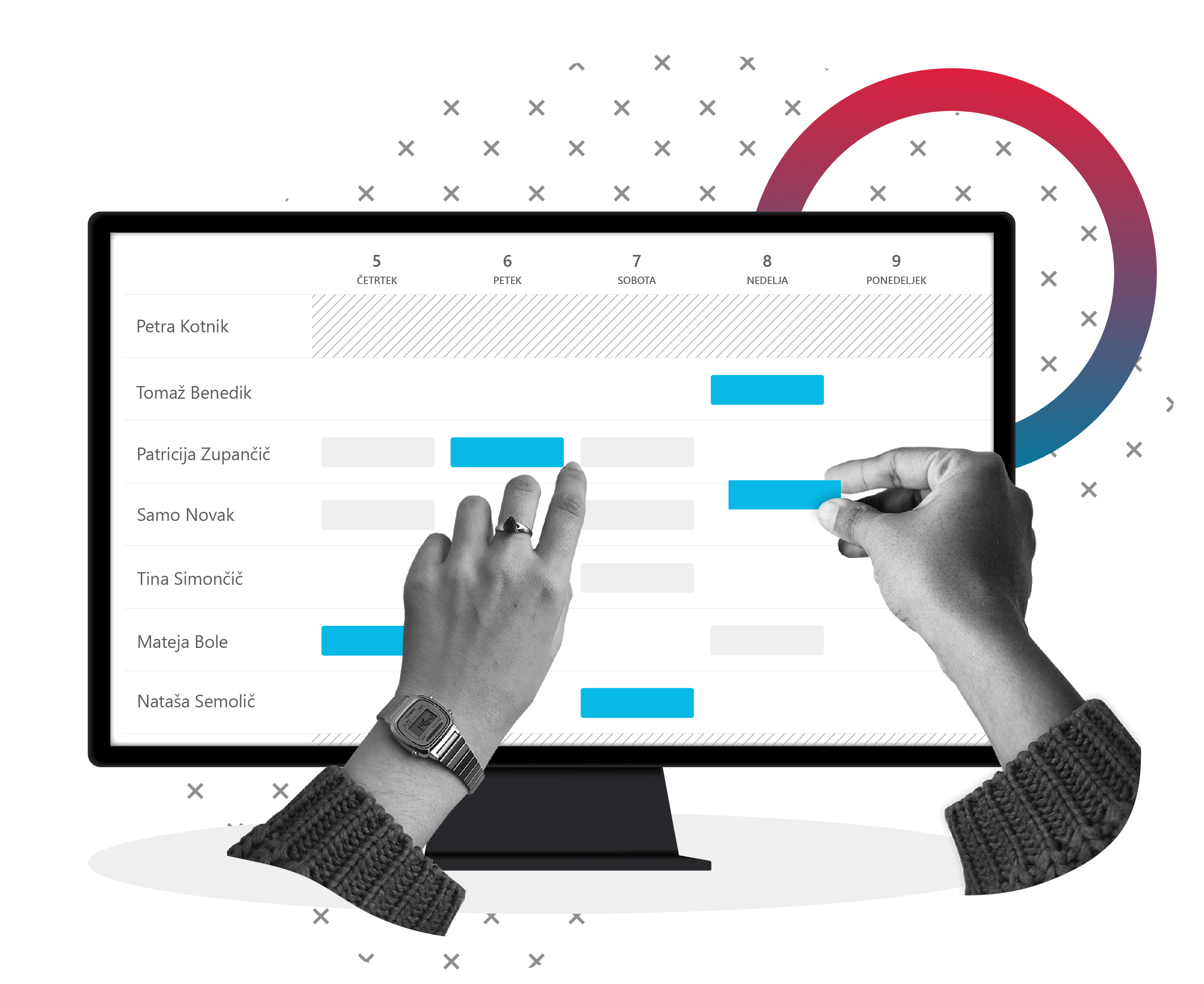
3.1 Scheduling and planning shifts on the calendar
Špica's time and attendance system is intuitive and adjustable. Rules can be defined for simple time and attendance across the company, or it can be scheduled to suit individual departments and workers. Automatic rule definition can also be implemented, scheduling the worker based on his/her time of arrival.
User rules determine everything from paid time tracking, compulsory attendance, lunchbreaks, short exits and overtime tracking. Morning, afternoon, weekend and other shifts can be prepared beforehand and assigned to workers with the help of the interactive calendar.
Such planning can be very detailed, meaning you can fashion detailed, individual, period-based schedules. If your shifts are more regular in nature, you can let the software determine the rules and only intervene when changes, such as changing weekend schedules etc., are necessary.
Read more:
Simple staff scheduling on an interactive calendar
3.2 Reviewing attendance and absence
By clocking in, workers are communicating their current status, which means an up-to-date review of the status of all employees is always available. Workers' status (working remotely, in office, on a business trip or on leave) can quickly be reviewed via web or on the mobile application.
When clocking points – meaning terminal locations or allowed locations for clocking via smartphone – are defined, you can also review the locations of the last clocking events.
Of course the system doesn't track users in realtime. This isn't spy equipment designed to exercise control and spread ill will, only display the location and time of the last known clocking event, and at the same time, inform users on the status of the employee – present, working from home, on a break etc.
Information about coworker presence can be accessed by all employees, facilitating communication by providing information about where to look for someone and who is absent today.
Read more:
How to introduce a time clock to your employees
3.3 Requesting, approving and tracking absences
First, the system is supplied with a list of workers which are then split into departments with their respective leaders. The employee list can be imported via an Excel table or with the help of the wizard in the application.
When importing employees, we also determine the quota of last year's and this year's leave. We may also import the running balance of hours in cases of existing timesheets from other systems. Workers are then split into departments and the leaders – meaning users assigned more rights by choosing the role of »leader« or manager – are chosen.
Department leaders approve absences in their respective departments, which is facilitated by the calendar view where all absences and their overlap are clearly visible. This is especially useful when managing leaves, and employees will receive an e-mail with a comment in case of rejection. The leader can therefore quickly inform the worker to e.g. plan his leave a week later.
If needed, we can also determine absence approvers for the leaders themselves, closely reflecting the hierarchy of the company in the application.
Read more:
Employee absence tracker – What kind of solution should you use?
The Leave Management System for a Modern Workplace
3.4 Worktime categories and types of payment
Entering the application for the first time, you will see it is already equipped with various types of absence and several worktime categories like physical presence, business trip, remote work, lunch break and unpaid presence. The system will also automatically account for holiday bonuses, weekend work and night shifts.
This means you can start using the system without entering any additional settings. The default setting is an 8 hour shift from Monday to Friday. This can easily be adjusted at the level of the entire company, a single department or an individual. The system will then automatically calculate the various types of payment and worktime categories. A worker on leave, for example, will get a daily addition of 8 hours in the category of »leave«, and the period of a month will be automatically added up and prepared for use in payroll.
If needed, you can further define your worktime categories with more complex rules or even add your own events like project work, special tasks, sites or machines.
You may also adjust the part of day to be taken into account as paid time, and prepare various schedules with various rules. For example, paid time can be set fom 7 AM to 3 PM for the morning shift, with early arrivals and late departures accounted for as unpaid time, which may later be transfigured into overtime.
Rules can be arbitrarily prepared for various shifts and individual employees. Every set of rules needs its own meters, which can be limited to operate on selected days, hours and worktime categories. In this way, you may prepare your own types of payment, e.g. a holiday night shift, only registered as valid in cases of more than 4 hours' worth of presence on the workplace.
3.5 Reports, analysis and export to payroll
It is extremely important that the timesheet system enables the export of data, facilitating quicker payroll.
It is also important that users can quickly and reliably access all the reports required at a certain point – most commonly upon inspection visits or for use in internal trend analyses of attendance, absence and overtime.
All Hours contains preconfigured reports with overviews of all collected data at the daily or monthly level. Paid or unpaid attendance, hours in various categories of absence, clocking time details, balances of hours, overtime etc. can all be reviewed in detail.
You may also adjust the reports with the additional filters and columns and save your own copies for easier access.
To facilitate payroll, a special type of export is used where payments can be assigned codes matching the codes in the payroll software. Data formatting is then further defined to make sure that exporting the data into the payroll software is truly only a click away.
Since All Hours can calculate all various types of work, overtime, absences and allowances, this means you can simply transfer the data into payroll at the end of the month. If needed, All Hours can also be connected via an API, meaning the data can also be automatically transferred from one system to another.
Read more:
HR Analytics: Merging the power of people and the power of data
4. Guidelines for choosing the optimal solution
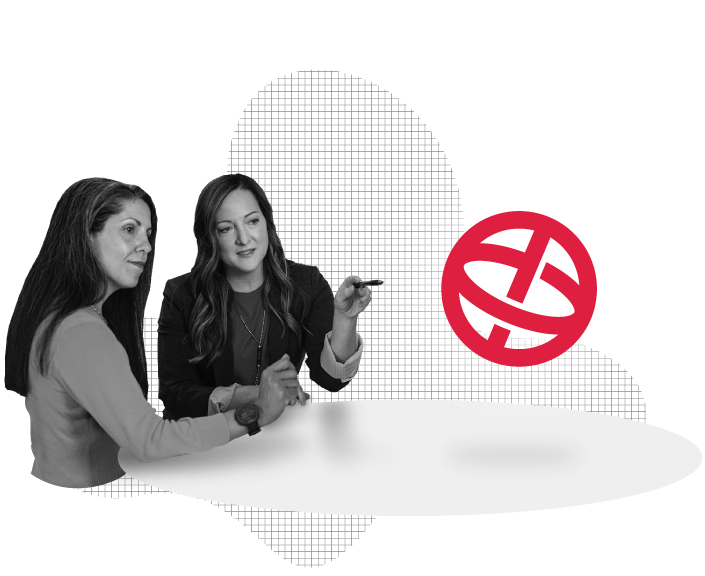
4.1 The pinnacle of technology
When choosing the provider, price, of course, is an important factor. In this area, our CLOUD/SaaS carries a great advantage – it is not an investment, but rather a subscription that can be flexibly adjusted to your current needs and can be cancelled anytime, which is a great advantage in these turbulent and illiquid times.
Of course the quality of service, the experience and the qualifications of the provider also matter greatly. In its 35 years of presence on the time and attendance and access control markets, Špica has managed to develop competencies in this niche that have no parallel in Europe, which has also been acknowledged by the acclaimed Gartner analytics house which has included us into their annual Market Guide of world providers in WFM.
Today, ID cards have largely been replaced by smartphones with the functions of ID cards, clocking terminals and communication units that forward data into the cloud infrastructure. The infrastructural software is continuously being updated in small batches of changes which are barely noticeable by the end user, with a user-friendly UI providing an intuitive experience. It is precisely Špica's solutions that combine all of these newest technological solutions.
4.2 Referential installations and strategical partnerships
In the world, there are over 3.000 companies totalling over a million users daily clocking events on our systems. We realize this is a great responsibility. This has led us to establish the ISO27001 standard, choosing the Microsoft Azure platform and acquiring the prestigious title of POTYA - Microsoft Partner Of The Year Award.
Alongside this strategical partnership with Microsoft, celebrated with a collaborative case study, we have also built a close strategical collaboration with SAP, the world's biggest provider of ERP solutions. We have been certified by both partners and are listed in their Marketplace, which means you can buy our solutions directly at Microsoft.
4.3 Plurilingualism and international reach
In times of distributed organizations, plurilingualism stands as a great advantage, which our solution takes into account by default. Špica has its own companies in the region, together with partner companies spread around the world, and with their help, the application has been translated into some of the most popular foreign languages. The list of languages is constantly expanding.
By himself or with the help of the administrator, every user can set up the application in his/her language of choice, and so different workers in the same company may use several different variants of their language(s). One central system can thus be used to cover entire multinational groups.
4.4 Audit trail – GDPR and the commitment to quality and safety
The Špica International company is ISO27001 certified, with the status being continuously maintained and revalidated through official SIQ assessments on an annual basis. The certificate ensures that we have measures in place to protect the data and the policies for data management and protection. Our time and attendance solution contains systemic solutions which allow for protection from unauthorised access and unauthorised use of the collected data, which ensures continuous risk mitigation.
In compliance with the applicable EU legislation on data protection (GDPR, viz. General Data Protection Regulation), ŠPICA Int. is a processor of personal data, and whoever uses our cloud services is a manager of personal data.
The ISO27001 certificate also extends to the Microsoft Azure platform which we use for our services and to store our data.
Read more about Microsoft Azure complience.
4.5 A beginner's entry into the world of time and attendance
If you wish to introduce timesheets straight away and without delay, you can receive a free block of clocking forms. This will give you some time to think and perhaps also to try out our counseling workshops which will contribute to internal coordination and prepare a quality Time and attendance policy.
The next step you can apply immediately is an Excel timesheet. The attachmen t includes a package of various Excel templates to choose from according to your needs. In place of an Excel template, some clients will simply equip their webpage for tools with a link to our time card calculator.
But, of course, the desire to improve on these manual timesheets will quickly appear, with the goal of reducing errors and the amount of administrative work, coordinating leaves and absences due to sickness, and lately, also the ever more popular category of working from home.
The management wants reports that are up-to-date, and the HR department would like to see automatic transfers of summative data into the payroll software. The company will sooner or later decide to first try out and the formally join the modern application for time and attendance, operating on mobile phones, significantly simplifying operations and increasing the mobility and productivity of employees.
Read more:
Time clock app - How to pick the best one for your business?
4.6 A guide to the main challenges of time and attendance
Our application can be joined without any other obligations and can be thoroughly tried out by the clients themselves or with the help of our consultant from the call center. We are left with the key dilemma: how to make our multifunctional solution, built on 35 years of experience in time and attendance, simple enough and user-friendly enough to convince even the most basic users to give it a go, gain a basic understanding in a short time and start intuitively using it without the need for extensive training or the need to work through the pages of a manual.
For this purpose, the software has been equipped with guides to systematically introduce individual phases and enable you to set up the inital settings and start using the application straight away without external help. Some settings will have already been set to default and can be adjusted as necessary.
Later, when using the system with its basic settings becomes second nature, we can try and optimize its use together, going for more advanced settings, further adjusting the system to meet your specific requierments.
Of course the chat icon is right there at all times as well, where you can start a conversation or exchange a message with one of our consultants, or you can read through the most frequent solutions sought by our customers - Help center.
4.7 Our customer support center
People react in different ways when an office clerk steps up to them and offers their help. Some just want to look at the products in peace, making a decision without help and with no secondary opinion, while others will gladly accept some advice, as the clerk knows the current trends and offers and can effectively find several possible combinations for the customer to choose from.
The choice remains the same in our virtual store:
1. Purchase the product autonomously and on your own by entering a free 14-day trial period, which comes with a self-help page set up in Help center, try out a ll the functions you find to be key to your operation and make your choice at the end of the period.
2. Consult a member of our staff from the customer support center to determine the basic settings, invite a test team of your colleagues and pick out the key functions to be tried out in the free 14-day period.
Every demonstration or consulting session comes complete with a record from the consultant, sent to you via e-mail after the session. The record contains a short memo with the discussed points, materials and potentially also a recording of the session, should you wish to go over the entire session again in peace. Typically, the memo will also include the next topic to be discussed, together with the date and time of the next meeting, as discussed with the client.
After making your choice and subscribing to our services, our customer support center is always at your service for support and settings optimization. Intercom, our messaging system for safely reaching out to our consultants in real time, is available in the application at all times.
We also publish SPICA Time&Space, a monthly newsletter used to inform clients on all news, examples of user experience from various fields, and proactive updates on potential changes in legislature and their various solutions.
4.8 Seven basic project areas
Listed below are the seven project areas in setting up Špica's solution for time and attendance. The ideal scenario would be to go through all of these but this is rarely the case in practice.
Some of the steps need to be performed at the very beginning, and some of them at the end of the period. Occasionaly, we would also return to a certain step and optimize the relevant settings after the system has stabilized.
It is a common occurrence that after two or three months we reach a better understanding of what kind of report suits individual users, which events might also need clocking and how to optimize the user settings. The initial settings are there for the system to take root and stabilize. Let's have a look at the seven basic project areas:
1. Users
a. Entering individual users or importing the list from a file
b. Creating the departments – company hierarchy
c. Assigning individuals to departments
2. Rights
a. Setting up the authorization roles
b. Assigning privileges to employees
c. Assigning the approvers
3. Time Policies
a. Setting up rules for the system and the users
b. Setting up work plans
c. Assigning timepolicies and work plans to users
4. Clocking points
a. Setting up the chosen clocking devices
b. Setting up all the clocking events
c. Creating and limiting geo location
5. Reviews
a. Reviewing and editing events
b. Reviewing attendances
c. Reviewing absences
6. Reports
a. Setting up and creating a daily report
b. Setting up and creating a monthly report
c. Creating and saving a new report template
d. »Payroll« report
7. Extending the subscription
a. Monthly/Annual subscription
b. Invoice/credit card
c. Welcome message
4.9 Calculating the ROI
When deciding on an investment or a subscription to a time and attendance solution, it makes good sense to calculate the savings that the system would bring, justifying the investment. This is especially important for the management which will get to see the final calculated score, facilitating the decision.
The three key areas that bring concrete »savings« are increasing employee productivity, reducing administrative costs and reducing errors. Naturally, modern systems also bring with them all sorts of »soft« savings – the distinctly heterogenous and flexible worktime of today, which is adapting to the specific needs of employees, draws in and engages the affiliation of the best talents in various businesses, which in turn has a positive impact on the vitality and longevity of the company.
Time and attendance brings »concrete« savings in several areas of operation:
- Time typically wasted on manual timesheets is reduced.
- A central overview over data on absence reduces time in coordination and employee scheduling.
- Repetitive, manual administrative tasks are reduced together with the time-consuming collection and calculation of data on attendance and absence.
- Stress in the payroll department is reduced, with the transfer of time categories into payment categories simplified and sped up
- Errors in collection and processing of time categories are reduced.
- Good planning and control over workload reduces wages for expensive overtime.
- Risk of non-compliance with regulatory legislature is reduced.
- Time spent for preparing ad hoc reports for management as well a periodical reports is reduced, with the data always up to date and accessible in real time with »just one click« with the help of preconfigured report forms.
- Stress in the HR and payroll department is reduced in finding the missing clocking information, completing the timesheets, locking the time period and forwarding the data to payroll at then end of the month.
- Time saved with individual employees reaches up to 15 min/person daily.
- The HR department saves up to 5 min/employee in daily administration.
- Even with a small number of employees, digital timesheets will quickly start returning your investment year by year (Pancom calculator and Robert Half & Associates in APA)
5. The sequence of 5 steps for effective time and attendance
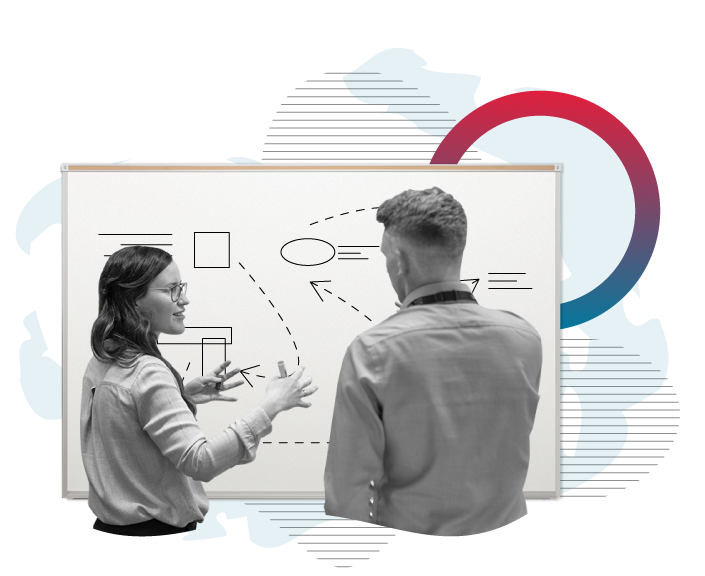
Join us on a 14-day trip through analyzing, planning, implementation, trying and deciding about the suitability of the time and attendance system. The journey has five stages which you can walk by yourself or use the helping hand of our consultant along the way to reach your goal with ease.
By entering your e-mail into the form below you will join an e-mail course designed to equip you with all the necessary knowledge to set up a modern time and attendance system, which, in the 14-day period, can be thoroughly tried out, presented to your colleagues and, in the end, handed over to the decision-makers in your company as well.
The sequence of e-mails will take you through the key basic areas to consider for the system to work for the employees and the management, bringing order to the typically demanding HR department.
The sequence of the five steps in the process:
- Trend analysis
- Welcome
- Trying out the solution
- Presenting to the management
- Making a decision
Every step is equipped with additional material, with more knowledge available if there is an interest in a particular topic. In case you are not interested you may also skip a step and prepare for the next one.
After a successful trial period, supported by a key function check list for the project, we will also offer you help in the form of templates for presentation and ROI argumentation, should your task be to inform the management on the projected business results and acquiring the decision to subscribe.
6. Agility mobilizes

Let us conclude by bringing in another business trend. If efficiency is key in many fields and areas, competitive victory seems to be slightly more dependent on flexibility and agility. The agile manifesto, comprised of the points given below, is Špica's main mantra and the context in which we build our solutions:
- Individuals and their interactions are more important than processes and tools.
- A user friendly, intuitive software is more important than an all-encompassing documentation.
- Close collaboration with the customers is more important than overly detailed contractual negotiation.
- Reacting to changes is key and holds an advantage over stiffly following the rules.
Let us also help you develop greater agility with the help of the most modern time and attendance system.
6. FAQ

Why does our company need a time and attendance solution?
A time and attendance system can perform several functions in a company: • It facilitates administrative operations. • It helps with acquiring more transparent data on time usage. • It saves time and reduces errors in payroll. Clocking and keeping timesheets is also required by law, but mostly, it automatizes certain key processes, which, in the end, is appreciated by the employees, the HR department as well as the management.
How does Time and Attendance differ from Employee Timesheet Management?
Both modules – Time and Attendance as well as Employee Timesheet Management – are part of the same homogenous system for managin employee worktime and are closely connected. • The Time and Attendance module is concerned with successfully tracking events being clocked, like arrival, departure, lunch break, business exit … • Employee Timesheet Management is the management, planning, reporting, analysis and integration with other backend systems like HR records and payroll.
How can time and attendance increase competitiveness in unstable times?
The All Hours solution supports all the most recent forms of work, like work from home, distributed work, part-time work etc. The system also allows time and attendance records for external collaborators like freelancers and students. The concept of flexible work allows the company to quickly and elastically adapt to ever new forms of work that attract and engage the most perspective talents in various businesses – the heart of a company's competitiveness.
Which advantages does the All Hours solution bring?
The All Hours service can be employed immediately, without a large investment up front, with the services operating in the cloud on a monthly or annual subscription. The simple and intuitive software enables the entire process of setting up and implementing the system at a distance to be carried out in the free trial period of 14 days. The advantage of a cloud-based system over »on-prem« is also that distance implementation takes 1 to 2 days on average, while classic solutions can drag on for weeks and months.
Is there another way to clock in besides using the terminals?
Of course. Employees can also use their mobile phones, web browser or a common interface on an Android tablet. All of the methods can be arbitrarily combined. An API interface is also available, enabling the use of devices from other providers for collecting data, e.g. POS registers, manual terminals, self-service terminals etc.

